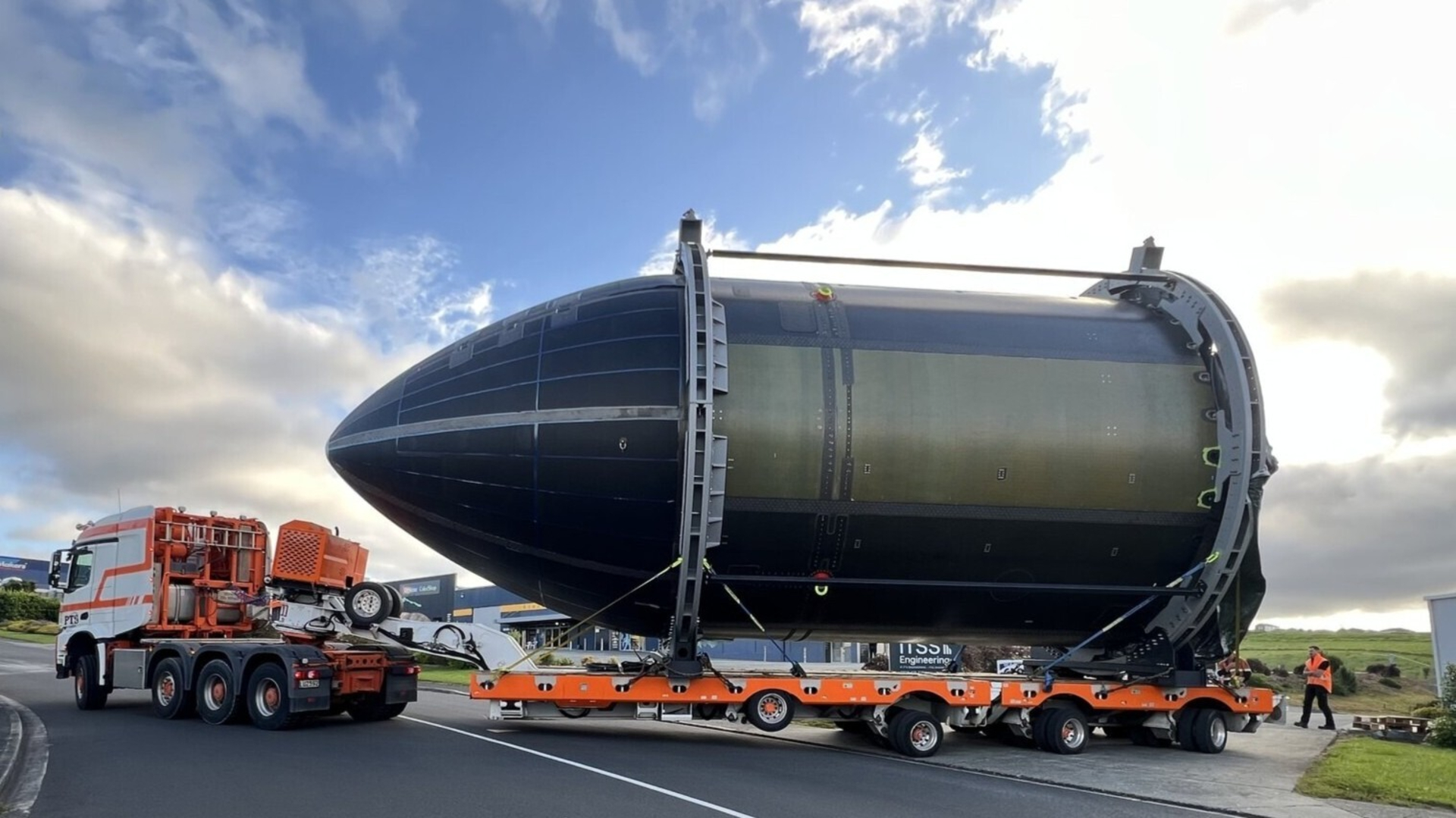In Photos: Russia's Humanoid Skybot Robot for Space
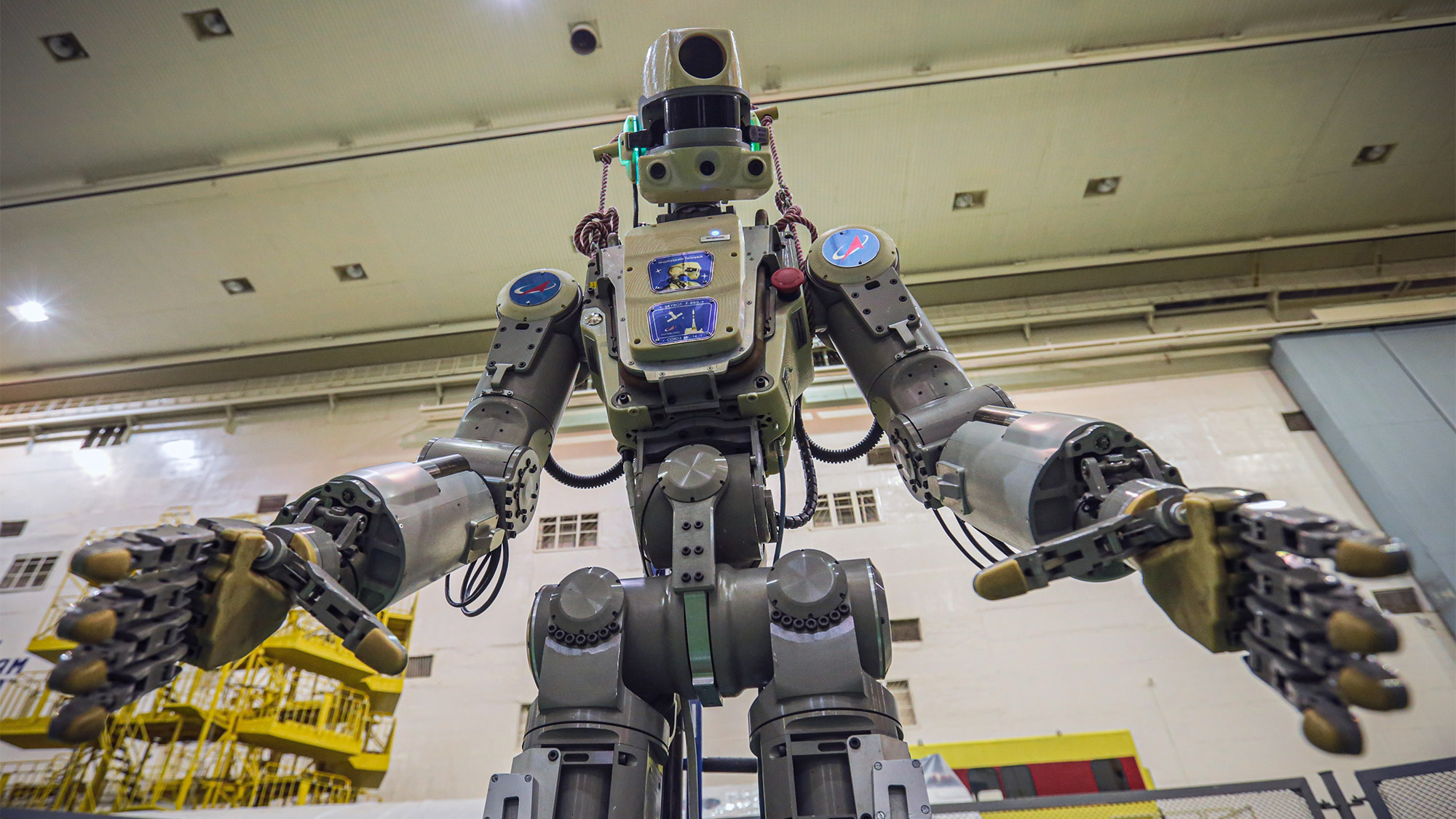
It may look menacing, but Russia's humanoid space robot Skybot F-850 is only here to help.
The robot, which launched toward the International Space Station on Aug. 22, 2019, blasted off on a test flight so Russian cosmonauts wouldn't have to risk their lives testing whether their Soyuz spacecraft could safely fly on an upgraded Soyuz 2.1a rocket. The mission was part of verification process by Russia's space agency Roscosmos to prepare its crewed Soyuz capsules for future launches on the upgraded Soyuz.
The mission also marked the first spaceflight of a humanoid robot for Russia. Scroll through this gallery to find out everything we know about the Skybot F-850 robot.
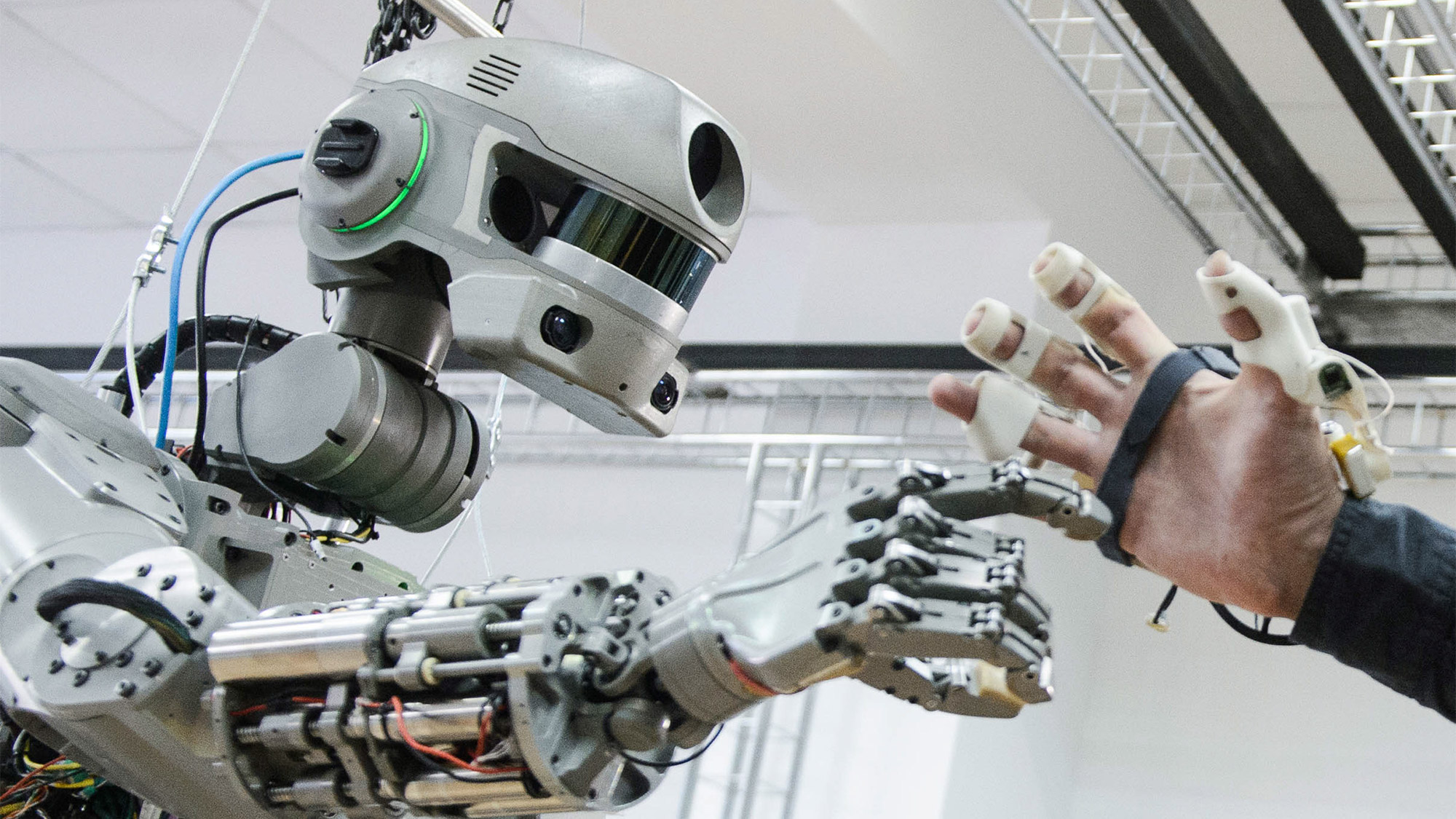
Skybot F-850 may be Russia's first humanoid space robot, but is not the first of its kind.
The robot is the latest in a series of Russian FEDOR robots developed since 2014 by Android Technologies for the Russian Foundation for Advanced Research Projects. The robots are designed to serve as stand-ins for humans in unsafe environments.
In space, that could mean Skybot could eventually be used to replace astronauts on spacewalks or to serve as a humanoid vanguard on other worlds like the moon or Mars.
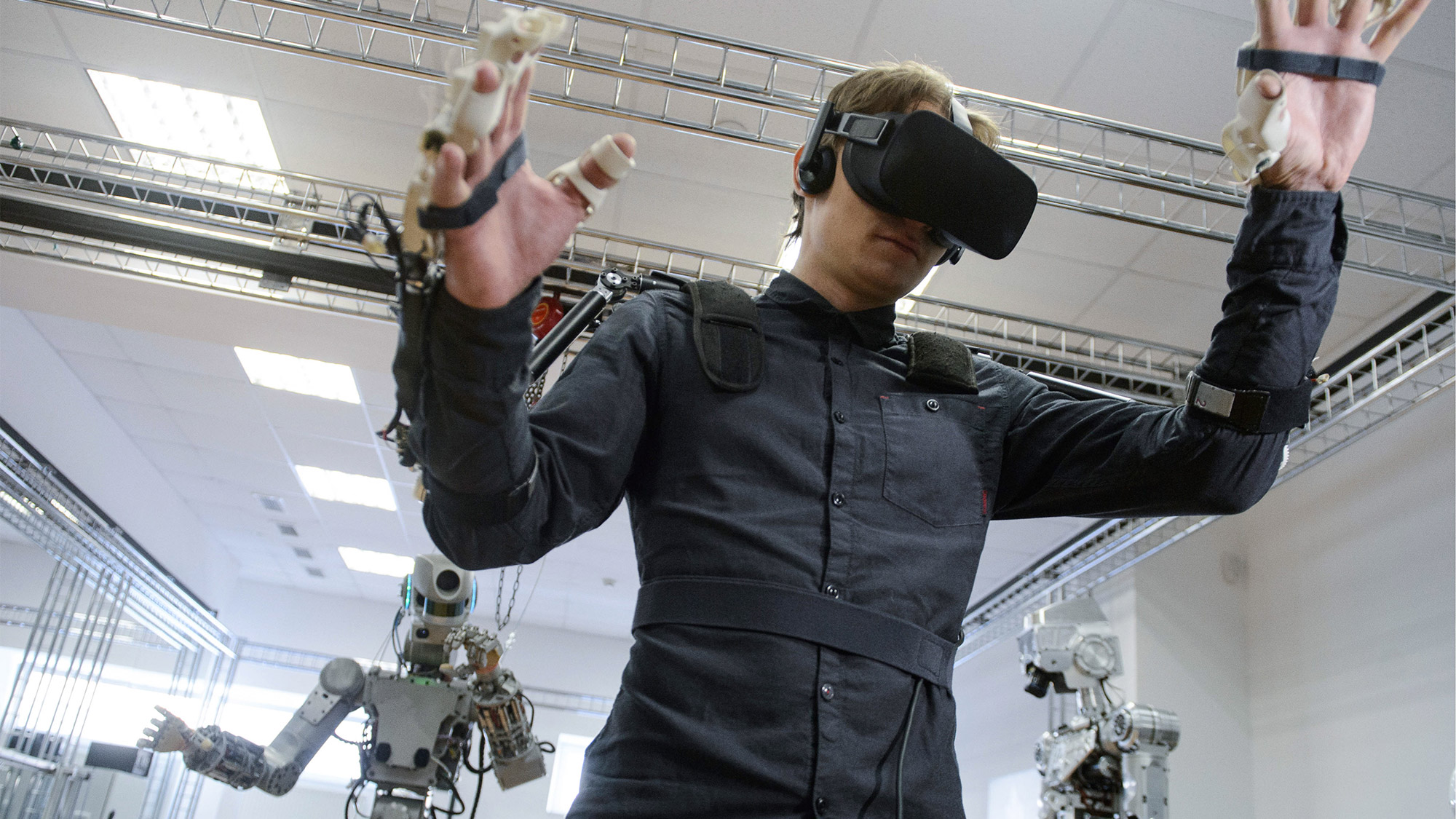
Skybot, like its FEDOR robot family, can operate in two modes.
The first, shown here, is a telerobotic mode in which an operator controls the robot through a "control suit," which includes telerobotic controls and a and virtual reality headset. But the robot can also function in an autonomous mode, reacting to the environment around.
Videos of tests on Earth have shown FEDOR robots driving a car and quad bike, walking and turning valves. One notorious video shows the robot firing two automatic pistols (one in each hand) and hitting targets.
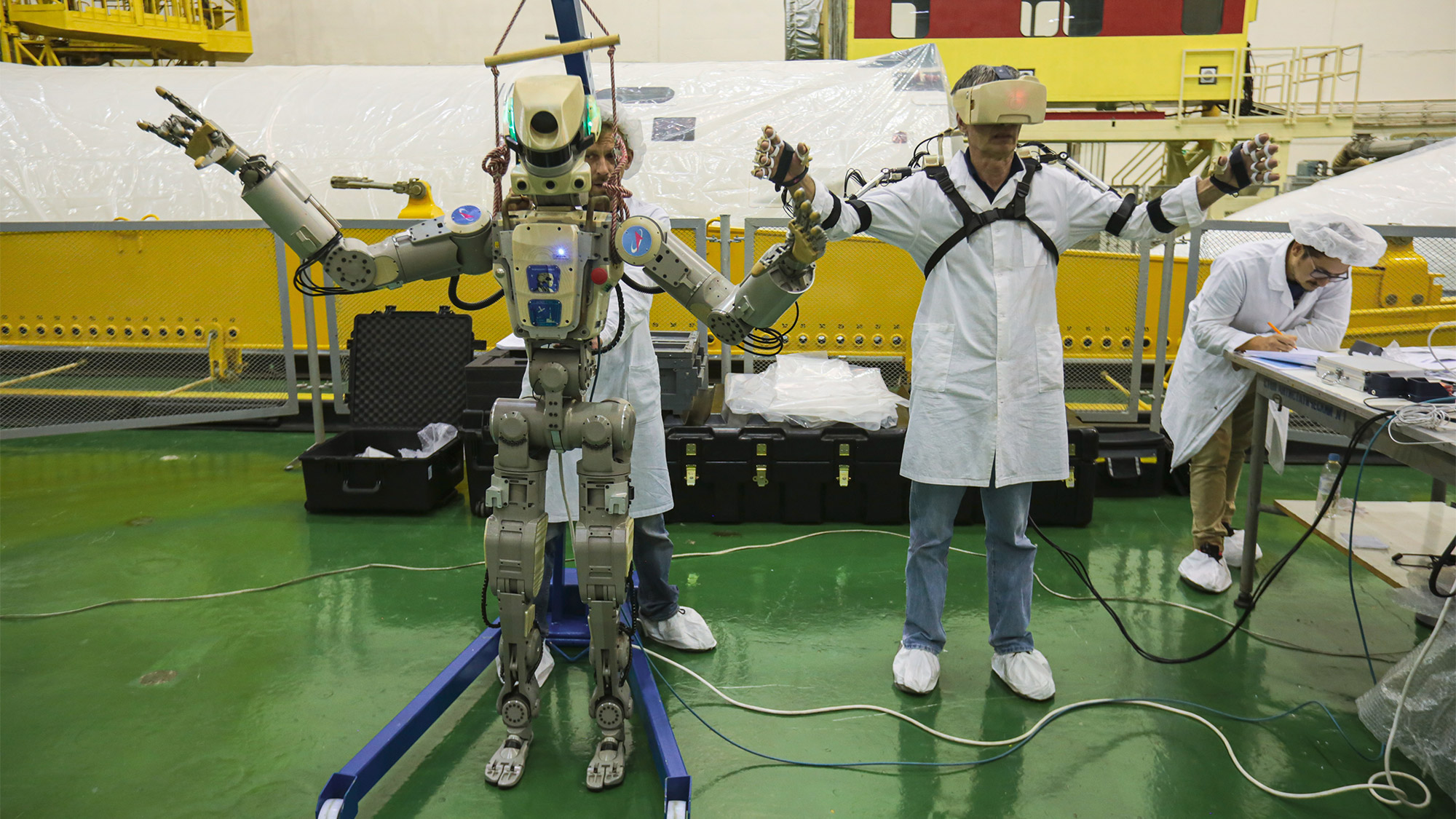
Skybot is as large as a full-size cosmonaut. The robot stands 6 feet tall (1.8 meters) tall and can sit in a standard Soyuz crew seat.
Aboard the space station, Skybot will be tested in its "avatar" mode with a human operator controlling its every move, Roscosmos said.
"If all tests are successful, the next generation of FEDOR humanoids will be tested outside the orbital station," Roscosmos' Alexander Bloshenko told Sputnik. "In the future, this will minimise the risk associated with the cosmonaut’s work in outer space, that which they perform while organising repairs on the ISS and other spacecraft."
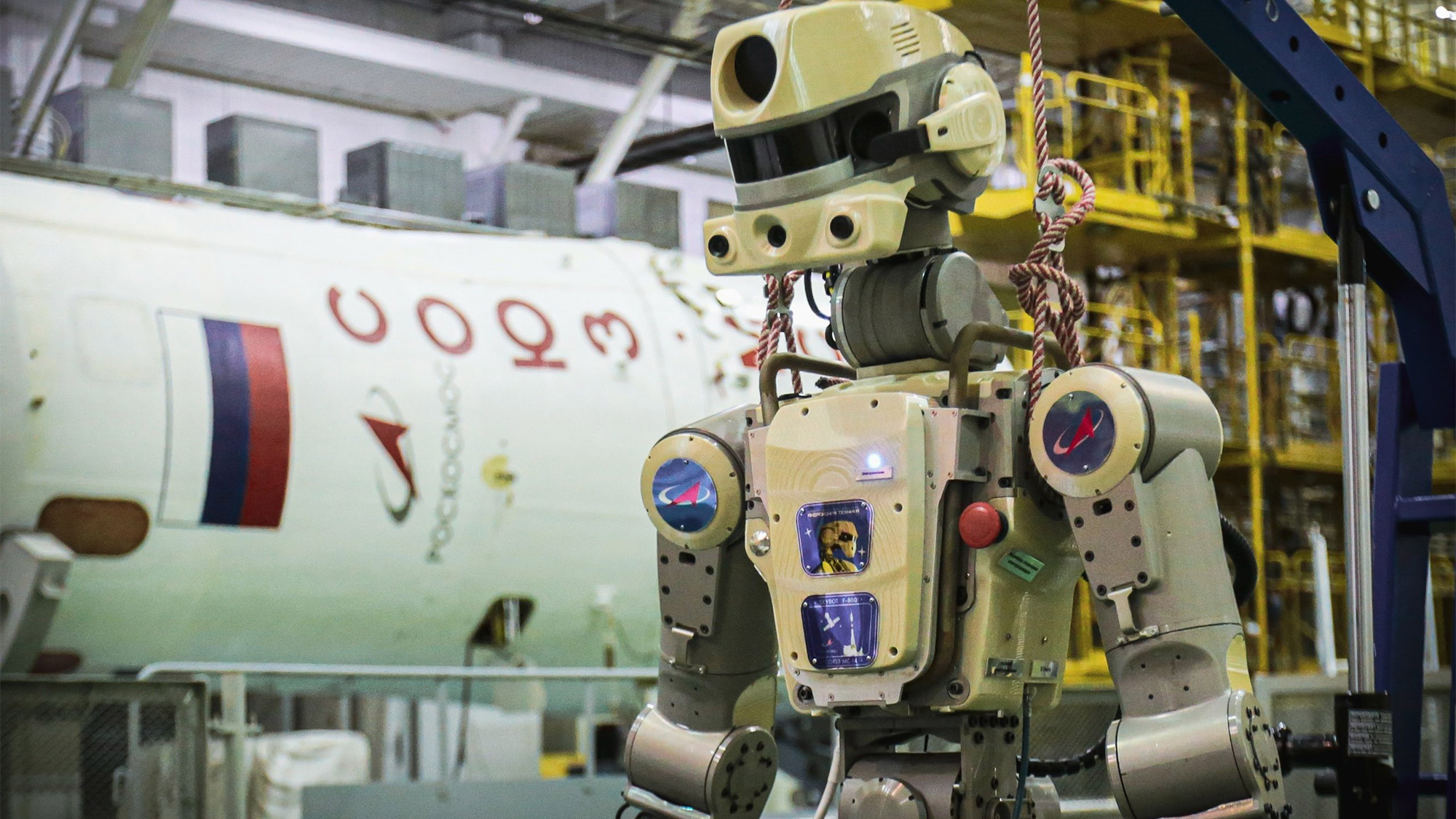
Skybot is dressed for success in this Roscosmos image.
The robot is adorned in logos for Russia's space agency Roscosmos on its shoulders. On its chest plate is a self-portrait of the robot.
Behind Skybot at left is the payload fairing for the robot's Soyuz MS-14 spacecraft at Baikonur Cosmodrome in Kazakhstan.
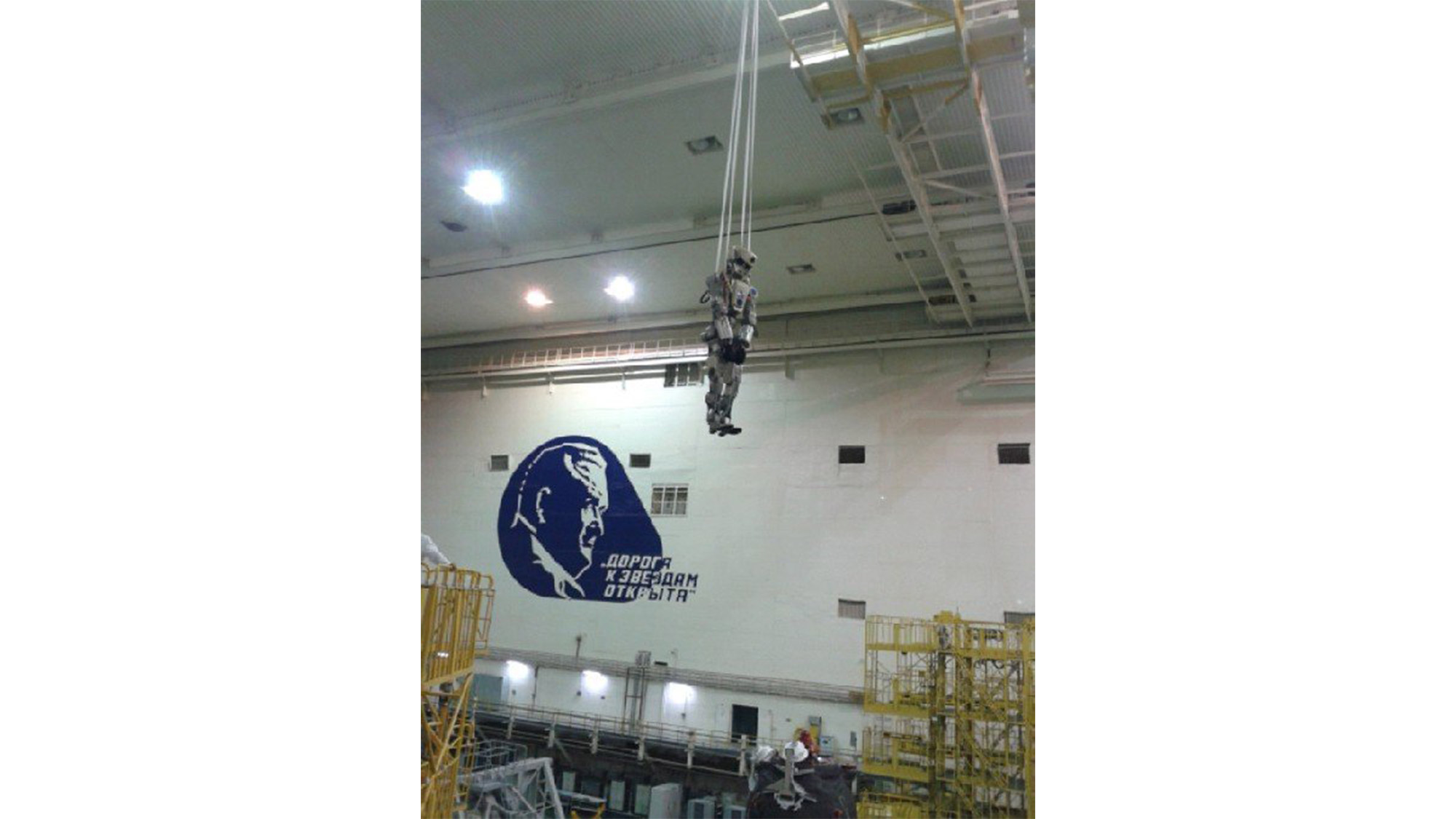
Skybot hangs from a crane as it is hoisted to its Soyuz MS-14 spacecraft.
The humanoid robot was the only passenger aboard the Soyuz, which launched to the space station packed with 1,450 lbs. (658 kilograms) of supplies for the Expedition 60 crew of the International Space Station.
But Skybot was not cargo. It rode in its own seat.
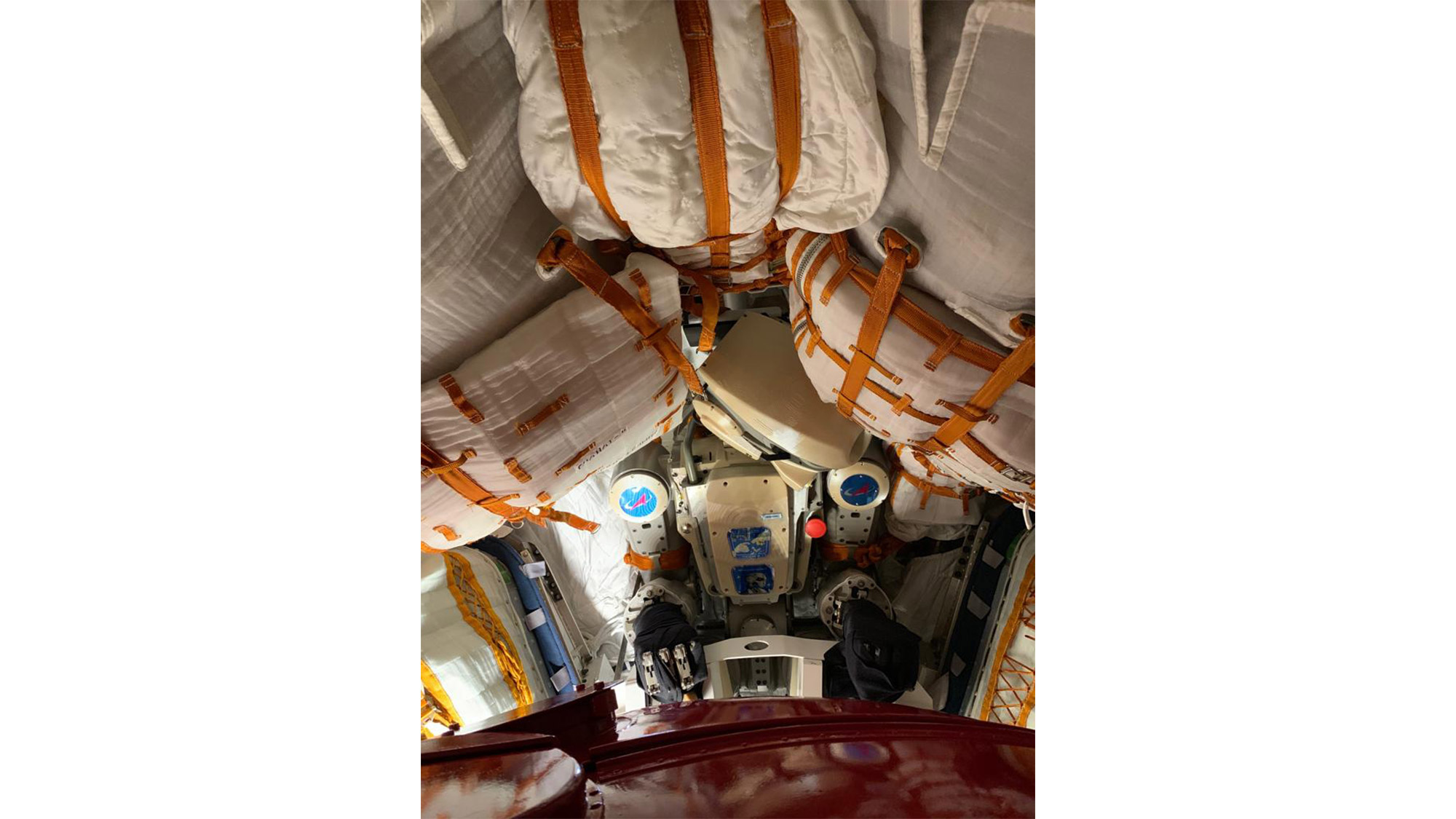
Skybot F-850 is the first humanoid robot ever to seat in the commander's seat of a Soyuz spacecraft. Here, the robot is seated in the center seat of the Soyuz MS-14 that launched it into orbit.
It's tight quarters. Surrounding Skybot are bags of cargo making up the 1,450 lbs. (658 kg) of supplies the Soyuz MS-14 carried into orbit. This Soyuz is the first in 19 years to head to the International Space Station without a crew.
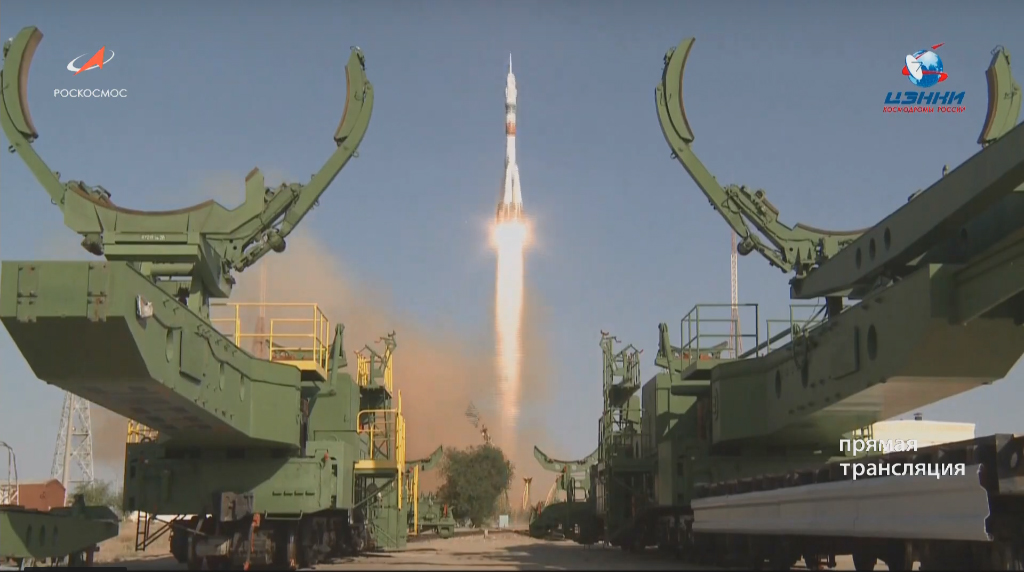
Skybot launched into space on Aug. 22, 2019 at 8:38 a.m. local time at Baikonur Cosmodrome in Kazakhstan.
The Soyuz MS-14 rocket carrying Skybot launched atop an upgraded Soyuz 2.1a rocket. It was the first time a Soyuz crew capsule was launched by a 2.1a booster. Previous flights all lifted off using the older Soyuz FG rockets.
The Soyuz 2.1a launch of MS-14 went off without a hitch, paving the way for the first crewed flights on the booster in March 2020.
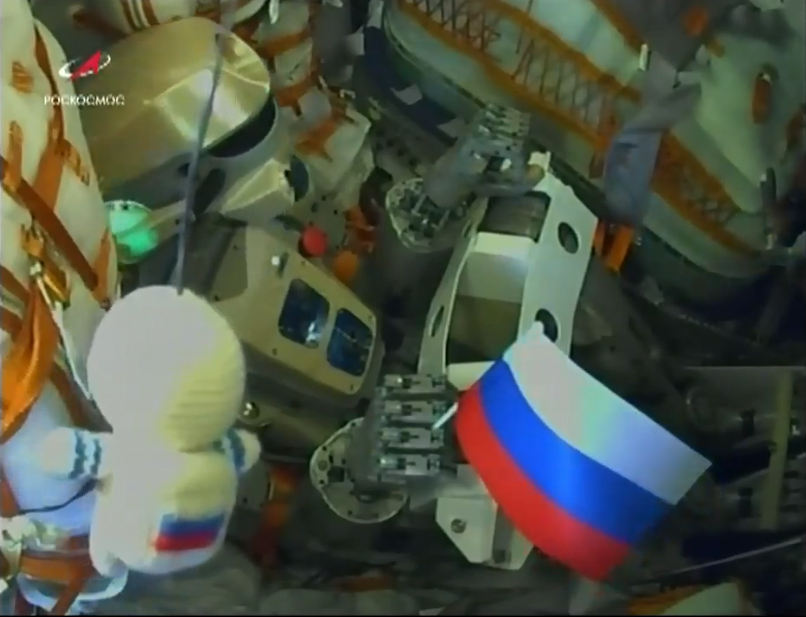
Here's a view of Skybot inside the Soyuz MS-14 spacecraft as it launched into space.
By coincidence, Skybot's Aug. 22 launch date was also Flag Day in Russia. A Russian flag can be seen in the the robot's right hand to celebrate its launch.
At left is a small cosmonaut toy used as a weightless indicator. Every Soyuz flight carries such small toys, typically chosen by the spacecraft's commander or crew, to serve as a visual cue that the spacecraft reaches orbit.
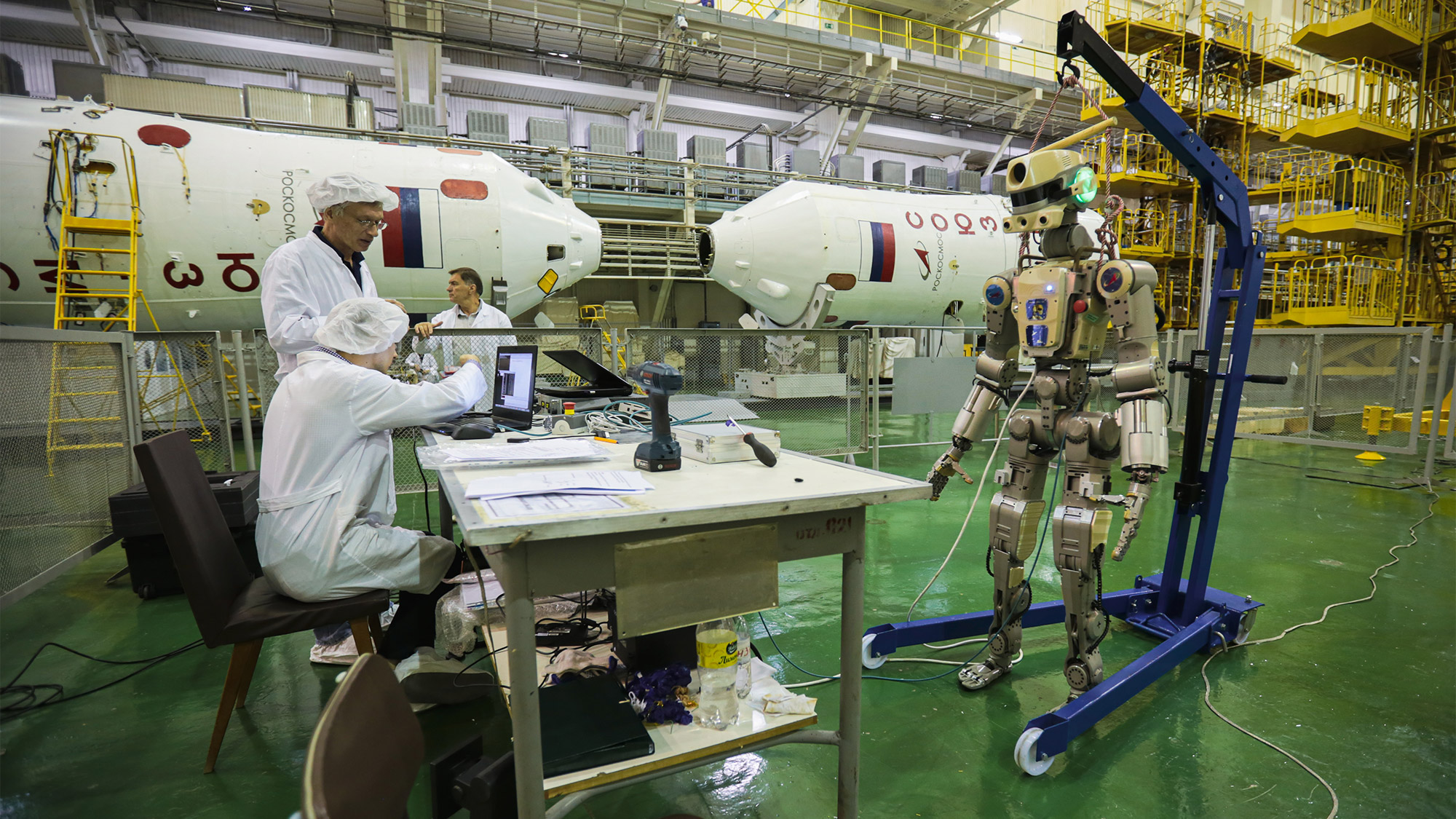
Here, technicians run tests on Skybot F-850 before loading the robot inside its Soyuz MS-14 spacecraft.
While the robot is similar to its FEDOR predecessors, it does carry some modifications, including some different materials, electronics and control systems to make it better suited for spaceflight, Roscosmos officials have said.
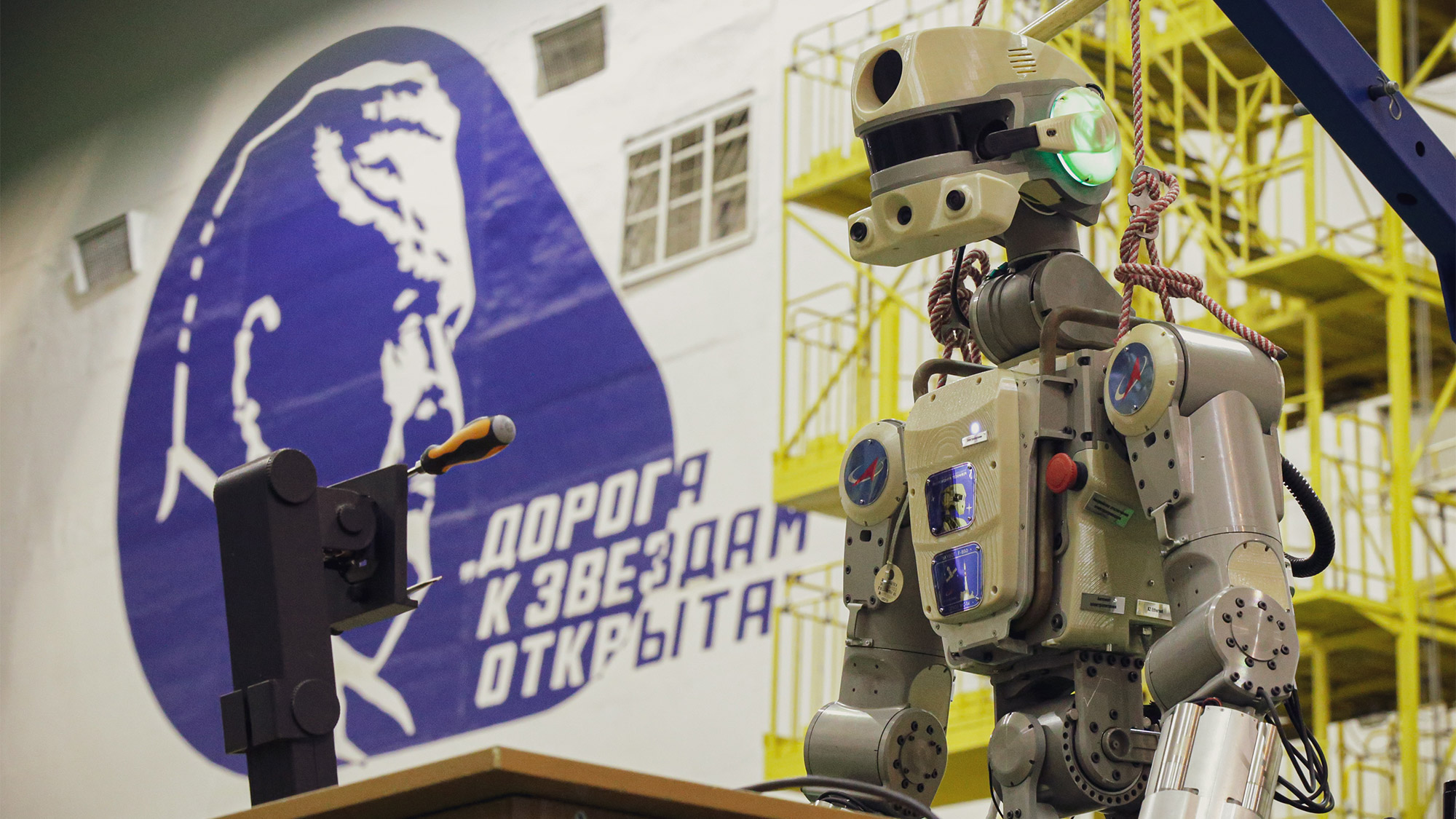
To make a spaceworthy version of FEDOR, engineers developed special movement algorithms and plans to limit the robot's movement in space so that it doesn't damage the International Space Station during its short visit.
Skybot F-850, shown here during tests before launch, is built with materials designed to withstand the strong vibrations on a Soyuz spacecraft during liftoff. The robot also carried a suite of sensors to record exactly what a human crewmember would feel when launching on a Soyuz 2.1a rocket.
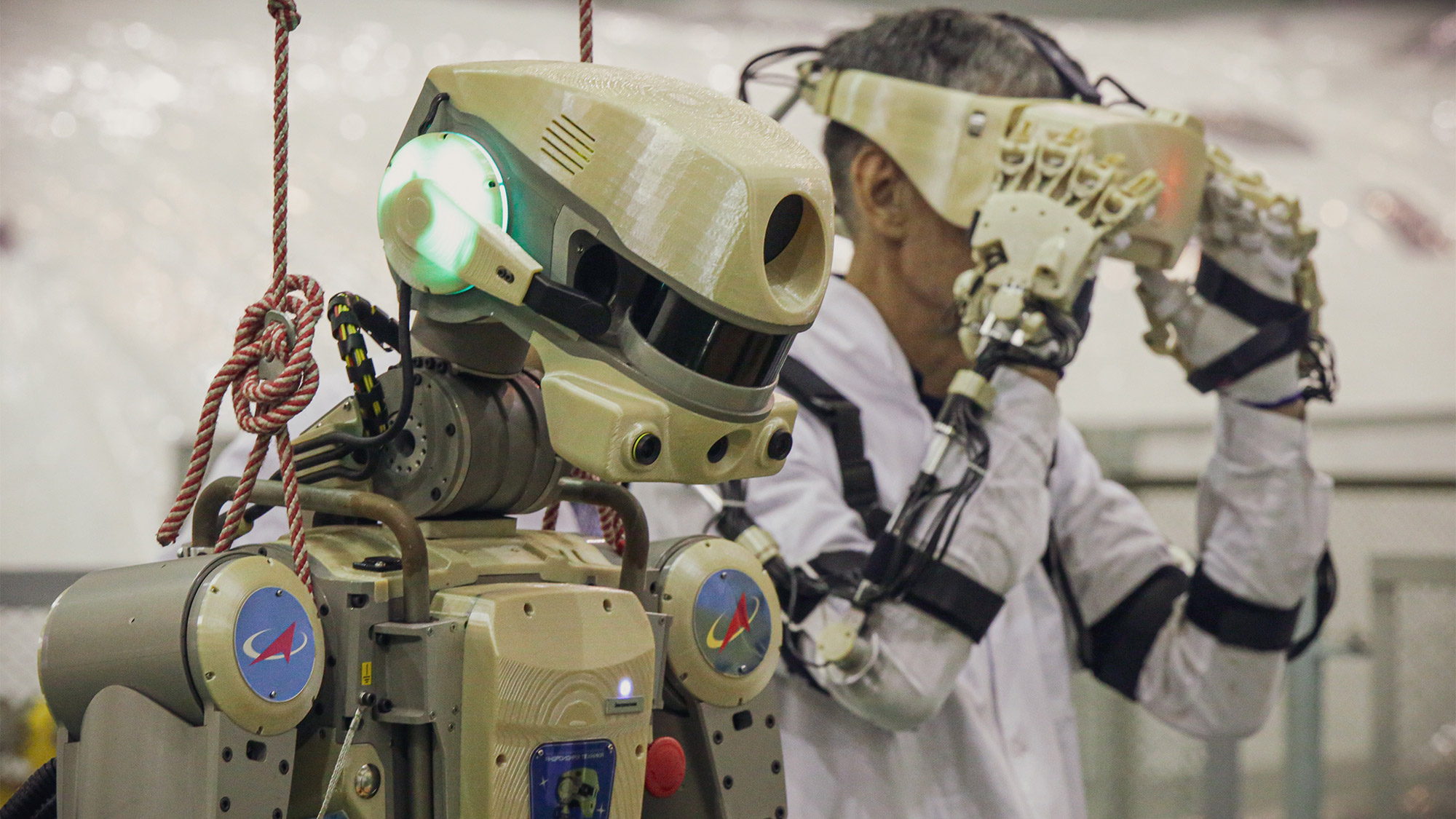
A technician works with Skybot F-850 during prelaunch tests in this image.
Alexander Bloshenko, the director of advanced programs and science at Roscosmos, said the first Skybot will serve as a "social companion" for cosmonauts on the space station. It is programmed with an archive of the space station's operational documentation, and can even answer questions and hold conversation.
And yes, it can tell jokes. But only in Russian at the moment.
"Like any person, Skybot F-850 is very sociable, it has a sense of humour. As I have mentioned before, it can support any topic of conversation and answer a variety of questions: from welcoming remarks, continuing with a speech about its creators and ending with the philosophy of space," Roscosmos' Bloshenko said in an interview with Sputnik News.
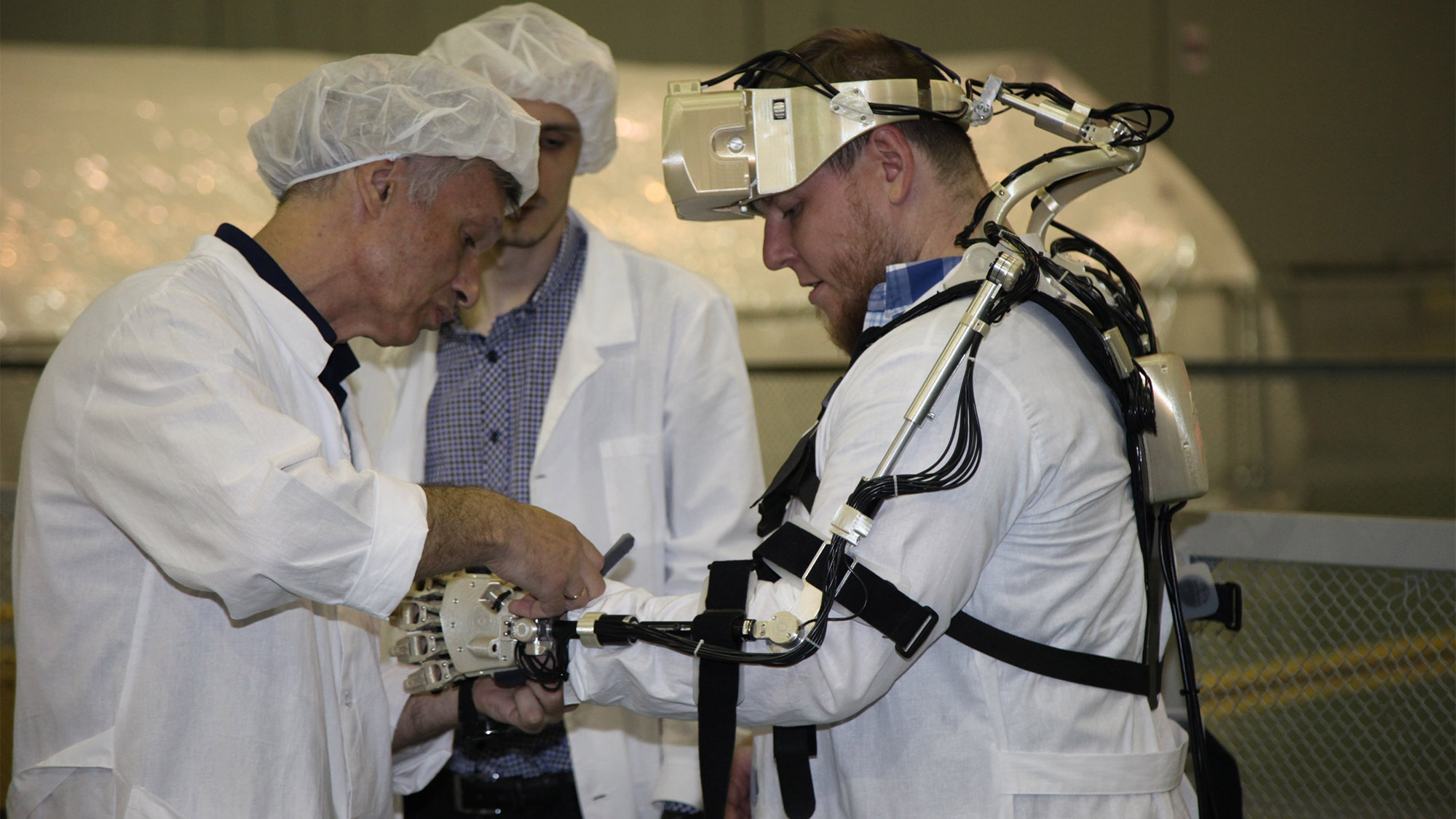
Here, a technician dons the control suit for Skybot F-850.
The suit includes controls for Skybot's extremely dextrous hands, arms and head. The full-body control suit allows an operator to control the robot in "avatar" mode in order to telerobotically explore environments that would otherwise be dangerous for humans.
"Future generations of such robots will solve tasks that are potentially of special risk for humans, such as extravehicular activities and telemetry operations on solar system bodies," Bloshenko said.
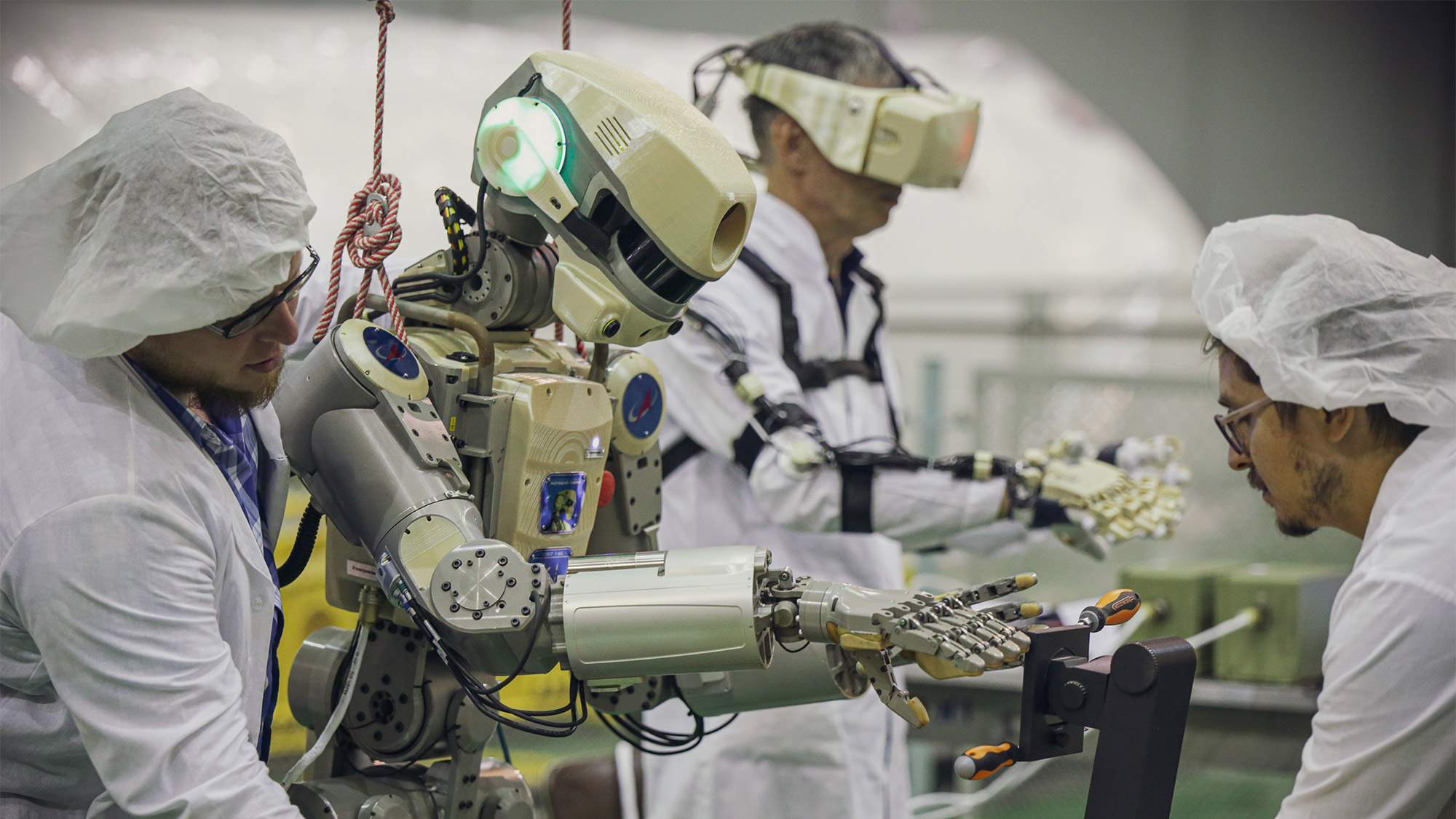
Skybot F-850's hands are one of its most advanced features.
The robotic hands are designed to work with standard human tools, like the screwdriver seen here. In video demonstration, Skybot's FEDOR robot family has been seen using fire extinguishers, an electric drill and a gas torch for welding.
"The tasks of Skybot F-850 on board of the International Space Station will be to carry out tests prepared by Russian engineers to assist cosmonauts inside the ISS," Bloshenko told Sputnik. "During this flight, the robot will work in 'avatar' mode, copying the movements of an operator."

Here, an operator uses Skybot to grab a water bottle, but of course the robot does not need water like its human astronaut colleagues.
Instead, Skybot is built to run on the same batteries used by Russia's Orlan spacesuits on the International Space Station, according to Roscosmos' Bloshenko.
"The humanoid Skybot F-850 is powered by a set of standard batteries from the Orlan series spacesuit, in which cosmonauts work outside the International Space Station," Bloshenko said in an interview with Russia's Sputnik News.
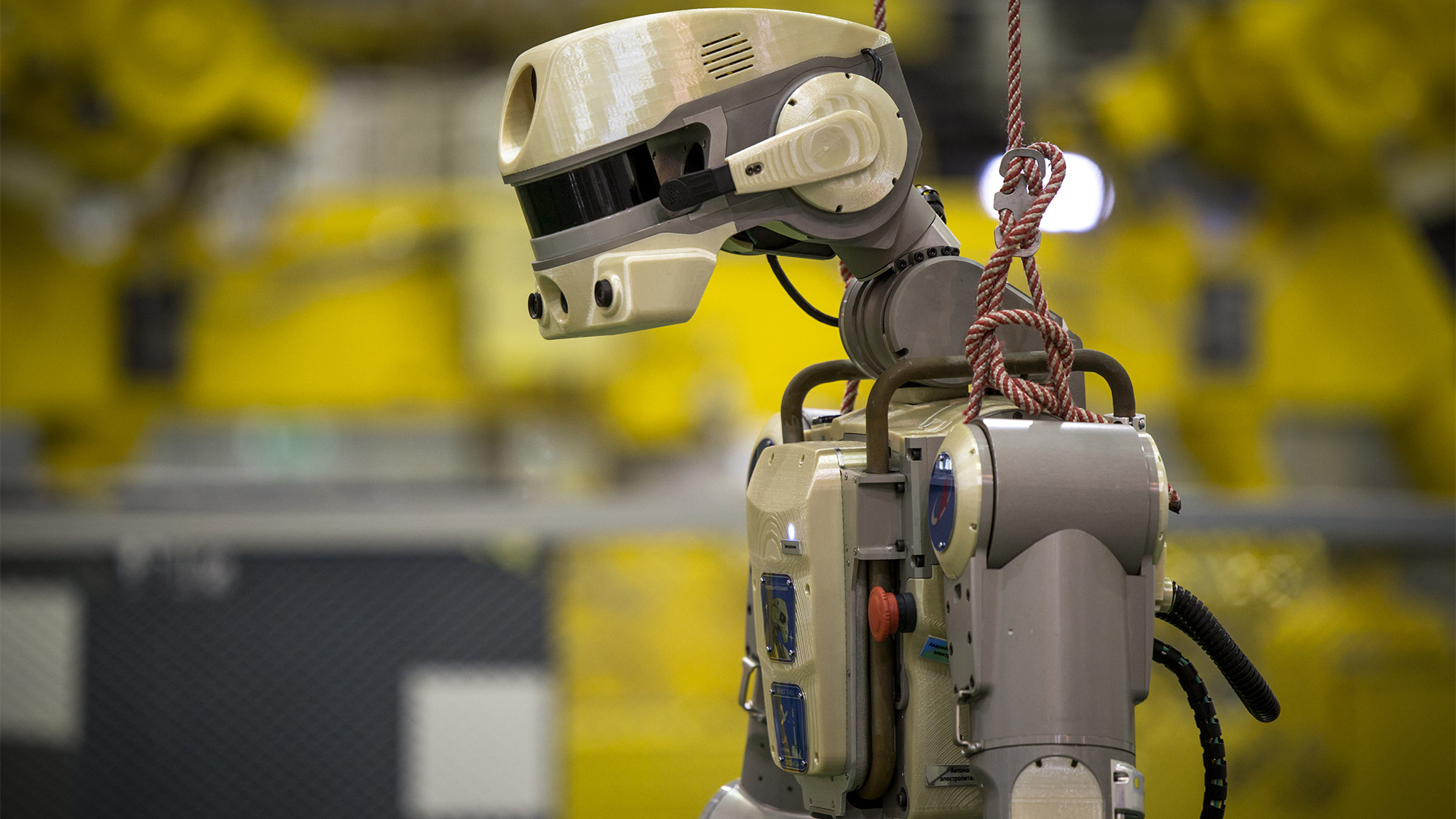
This view of Russia's Skybot F-850 space robot offers a clear profile of the humanoid automaton.
Once in space, cosmonaut Alexander Skvortsov will work with the robot on a series of technology demonstration tests before packing it back aboard the Soyuz MS-14 spacecraft for the return trip to Earth.
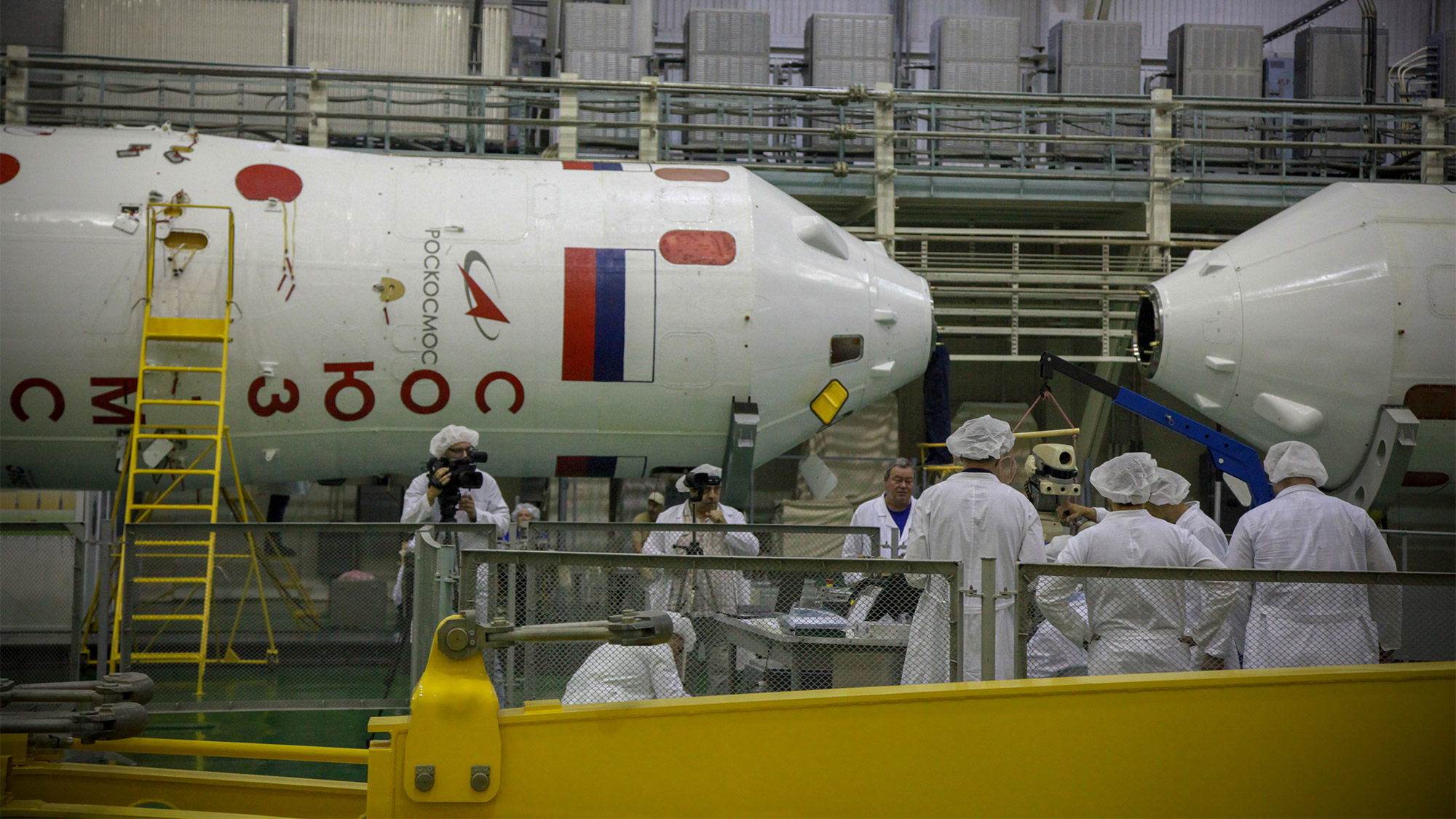
Technicians work with Skybot F-850 during final prelaunch tests before loading it onto its Soyuz MS-14 spacecraft at Baikonur Cosmodrome in Kazakhstan.
The robot is not expected to spend a long time in space, just a few weeks. In early September 2019, the Soyuz MS-14 carrying it will return to Earth, bringing Skybot back home.
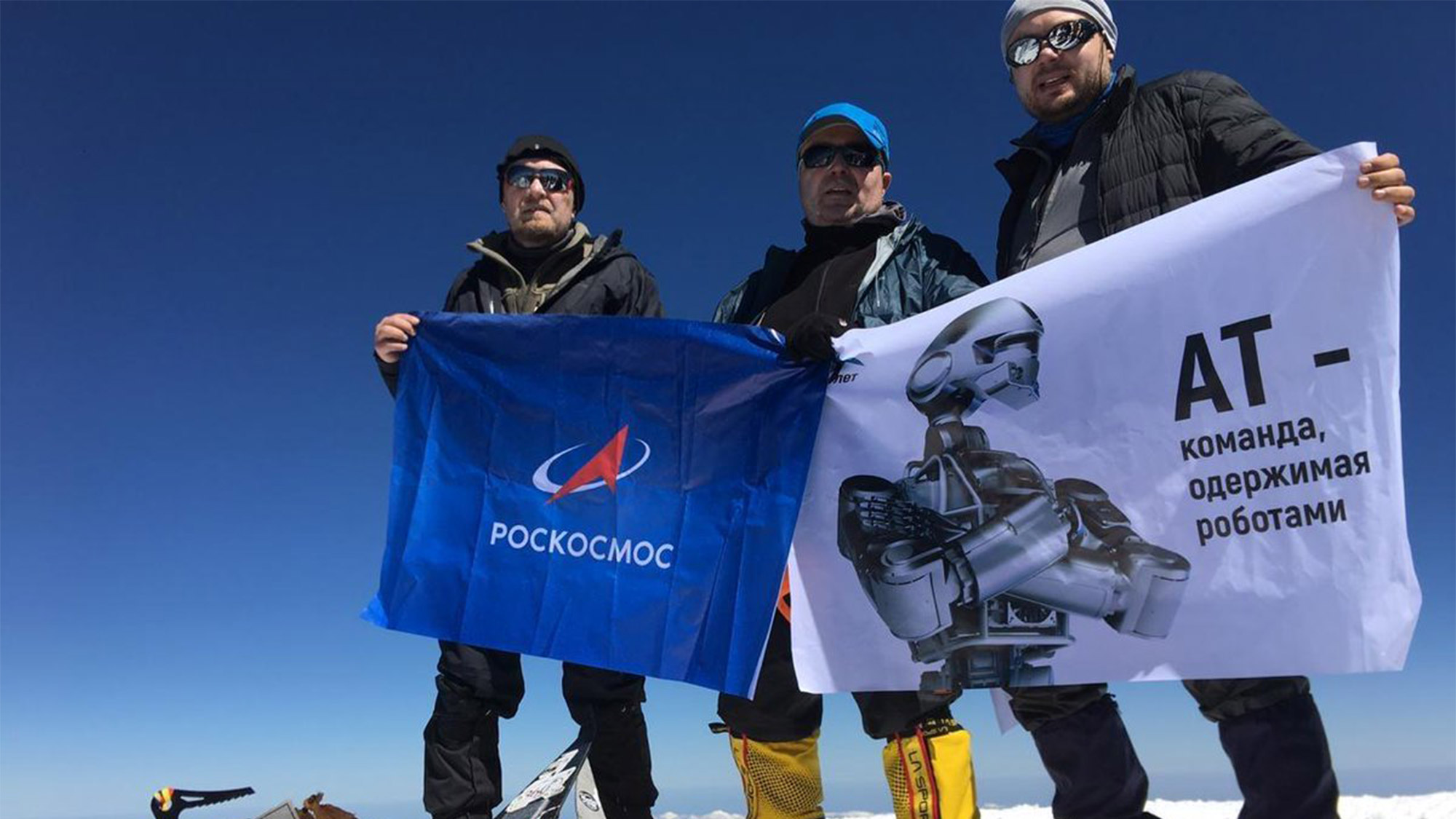
There appears to be a lot of Russian pride behind Skybot's mission to space.
Here, the builders of Russia's humanoid robot Skybot F-850 celebrate their robotic creation from the peak of Mount Elbrus, the highest mountain in Russia and Europe.
Shown here are: A. Permyakov, E. Dudorov and E. Gerasimov.
The robot launched into orbit on Aug. 22, 2019 and is expected to return to Earth in early September.
Real-Life 'Replicants': 6 Humanoid Robots Used for Space Exploration

Tariq is the award-winning Editor-in-Chief of Space.com and joined the team in 2001. He covers human spaceflight, as well as skywatching and entertainment. He became Space.com's Editor-in-Chief in 2019. Before joining Space.com, Tariq was a staff reporter for The Los Angeles Times covering education and city beats in La Habra, Fullerton and Huntington Beach. He's a recipient of the 2022 Harry Kolcum Award for excellence in space reporting and the 2025 Space Pioneer Award from the National Space Society. He is an Eagle Scout and Space Camp alum with journalism degrees from the USC and NYU. You can find Tariq at Space.com and as the co-host to the This Week In Space podcast on the TWiT network. To see his latest project, you can follow Tariq on Twitter @tariqjmalik.
